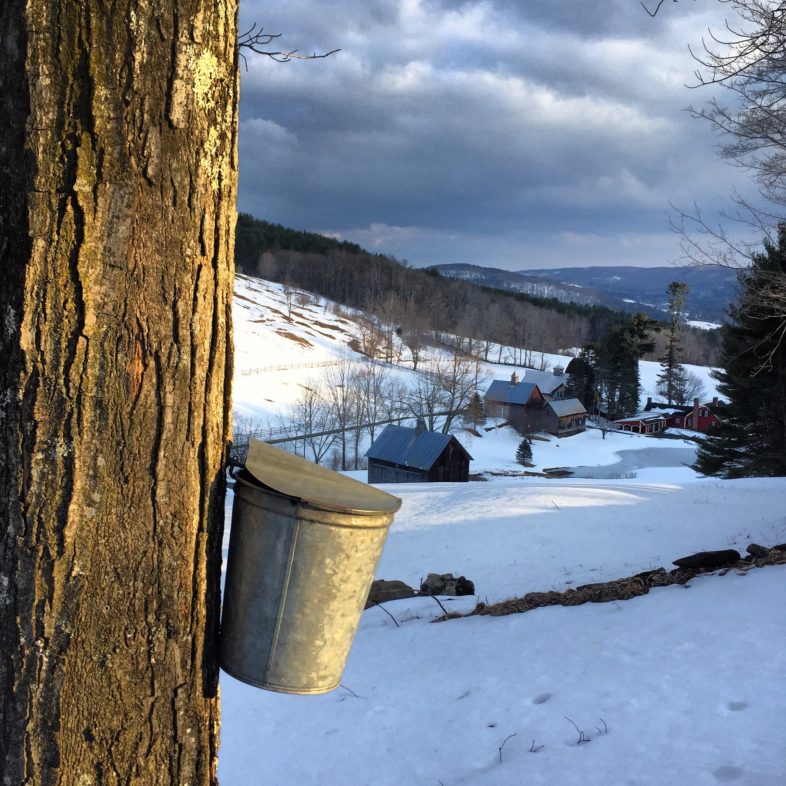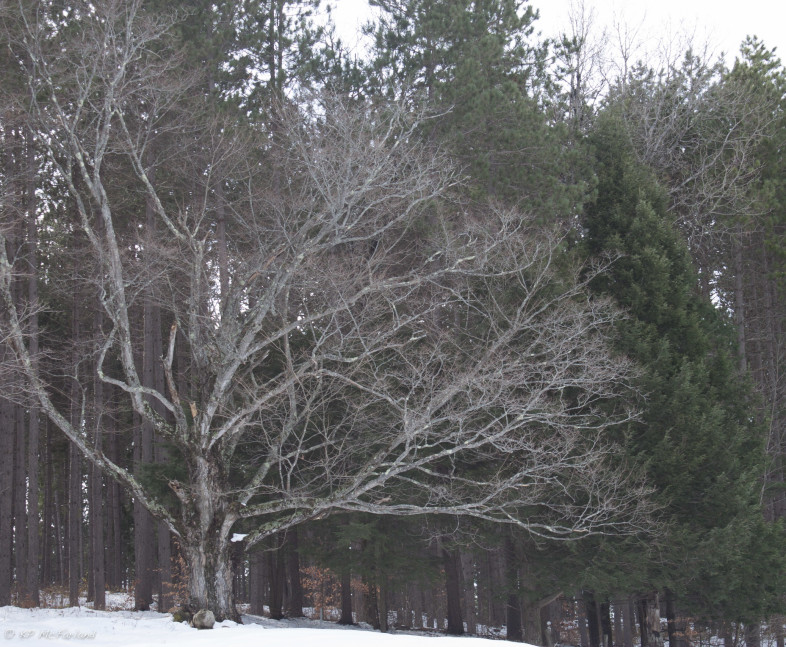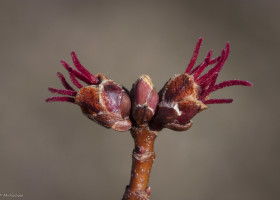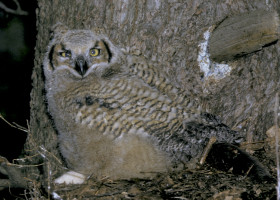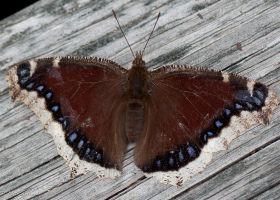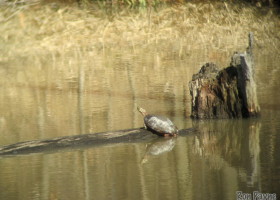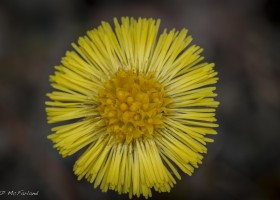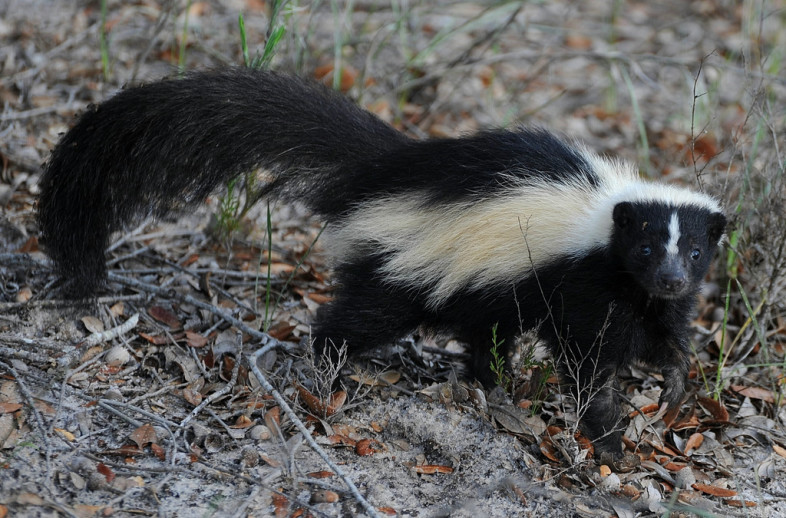On Tuesday, March 20th at 12:15 PM spring arrives in the north. The spring equinox marks the moment the sun crosses the celestial equator – an imaginary line in the sky above Earth’s equator – from south to north. It is also at spring equinox that people all over the world can see the sun rise exactly due east and set exactly due west. While the sun may be predictable, March weather is not. In fact, March is appropriately named for the Roman war god, Mars. March is a month of battles between warm and cold, between winter’s refusal to leave and spring’s insistence on coming. So, here are some signs of spring in this Field Guide to March.
the SLOW sap FLOW
Scientists have been trying to explain sap flow for decades. Maples, along with a few other species like walnuts and butternut, develop positive pressure in their stems rather than in the root system. Several freeze-thaw cycles initiate positive stem pressure. The magnitude of pressure is correlated to sucrose (sugar) concentrations in the sap. Higher concentrations of sugar mean higher positive stem pressure.
Two theories were posed to explain how high positive pressure developed in maple stems when temperatures fluctuate around freezing. The Milburn-O’Malley theory, named after the scientists who first described the idea, suggested that pressure development was simply physics. On the other hand, the osmotic theory suggested that living cells and sucrose generated osmotic pressure differences between fibers and vessels in the sapwood.
Way back in 1860 it was thought that expanding gasses caused sap to flow. The Milburn-O’Malley theory further suggested that gas-filled fibers contract when cooled and pull water from liquid-filled vessels through the fiber walls. The water would freeze and compress gases. As it thawed the next day, the gas would expand and push the water out of the fibers and back into the vessels. More recent studies have shown that there is a flaw in this theory. Gas bubbles under pressure can actually dissolve, which reduces the pressure to the same as the atmosphere within just a few hours — yet stem pressure continues for days.
The osmotic theory explained it via osmotic processes that caused long-term pressurization of maple sap. Sugar concentration in the vessels builds as the sap run progresses, suggesting that living cells are involved in the process rather than simple physics.
Recently, scientists from Maine and Vermont found anatomical evidence to support the osmotic theory. They then used a fluorescent dye that was molecularly similar to sucrose to trace the pathway of the sugar and found they were indeed excluded from the fibers. Without the sugar, compressed air bubbles in the sap lost pressure in just a few hours.
In a nutshell, as the sap cools at night, it creates suction in the tree and pulls water from the roots. During the day, the sap warms and creates positive pressure in the stem. When the stem has a wound, such as a tap, the pressure forces the sap out of the wound and in this case, into our metal bucket.
watching for first signs of Spring
Silver Maple (Acer saccharinum) is the first of the maples to bloom in North America, beginning as early as February in the southern part of its range and extending into May in the north. Flowers bloom long before the leaves appear. Because pollen is produced so early in spring, it may be important for bees and other pollen-dependent insects. Most references describe silver maple as wind pollinated, but insect pollination may be important, as many bees visit the flowers. Seeds develop rapidly: within 24 hours of pollination, flower parts wither and ovaries begin to swell.
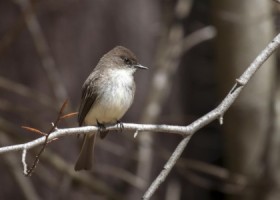 As winter visitors begin to move northward, birds from the south start to arrive. One of the earliest spring migrants, the Eastern Phoebe, returns to northeastern North America around mid-March. The males precede the females and begin immediately to establish their territories and sing their spring song. Nest building begins soon after the female arrives. She builds the nest using mud, grass and moss, often on a building ledge. Sometimes she will renovate an old nest from the prior year. Other early songbird migrants are the American Woodcock, Red-winged Blackbird, Common Grackle, Brown-headed Cowbird, and American Robin. We’re now getting reports of our first Song Sparrows returning. Check out the Vermont eBird bar chart for this month to find out what else might be arriving near you this month and add your sightings.
As winter visitors begin to move northward, birds from the south start to arrive. One of the earliest spring migrants, the Eastern Phoebe, returns to northeastern North America around mid-March. The males precede the females and begin immediately to establish their territories and sing their spring song. Nest building begins soon after the female arrives. She builds the nest using mud, grass and moss, often on a building ledge. Sometimes she will renovate an old nest from the prior year. Other early songbird migrants are the American Woodcock, Red-winged Blackbird, Common Grackle, Brown-headed Cowbird, and American Robin. We’re now getting reports of our first Song Sparrows returning. Check out the Vermont eBird bar chart for this month to find out what else might be arriving near you this month and add your sightings.
As songbirds begin to arrive, some Great Horned Owls have already completed incubation by the end of March.They’ve been sitting on eggs for about four weeks. After hatching, the young owls fledge in 40 to 45 days, but remain dependent upon their parents for food until they can fend for themselves. Nests often consist of sticks and vary widely in size, depending on which species originally built the nest (usually Red-tailed Hawks, other hawk species, crows, ravens, herons, or squirrels). Great Horned Owls may line the nest with shreds of bark, leaves, downy feathers plucked from their own breast, fur or feathers from prey, or trampled pellets.
Whether or not it comes in like a lion, March sometimes heads out like a … butterfly. On sunny days in late March we often see the season’s first butterflies on the wing. But they aren’t newly emerged from a chrysalis; in “butterfly years” they’re ancient. The butterflies of March, at least here in the north, are among the few that overwinter as adults. Mourning Cloak, Milbert’s Tortoiseshell and Eastern Comma are among the species that slip into natural cracks in trees or under the clapboards on homes in the fall, and pass the winter in a state of torpor. When the sun emerges higher in the sky in March, some of these butterflies “feel the warmth” and take flight. Lacking nectar, they’ve got other matters in mind: spring breeding before their lives are over. You can add all of your butterfly sightings to eButterfly.
Under the ice of lakes and ponds the body temperature of the Painted Turtle averages just 43 °F all winter long. But after ice out, sunny and warm weather brings the Painted Turtles out to bask. To be active, they must maintain an internal body temperature between 63–73 °F. When fighting infection, they can raise their temperature up to 8 °F higher than normal. Despite becoming active in March, they may not eat until May if the weather stays cool. Mortality can be high during the spring when they are living on the energetic edge of life. Basking also helps them capture vitamin D from sunshine to metabolize calcium to grow and solidify their shells.
One of the first flowers to emerge is Coltsfoot (Tussilago farfara), a species introduced from Europe that can often be found along roadways where the snow first melts away. The name “tussilago” is derived from the Latin tussis, meaning cough, and ago, meaning to cast or to act on, and harkens back to its medicinal uses. But the discovery of toxic pyrrolizidine alkaloids in the plant has resulted in liver health concerns. One of the earliest native species to flower his Hepatica. Sharp-lobed Hepatica (Anemone acutiloba) is an attractive wildflower of the deciduous forest understory. It differs from the closely-related blunt-lobed hepatica (Anemone americana) in having more acutely pointed leaf lobes. Be sure to add your sightings to our database on iNaturalist Vermont.
Eagles on Eggs
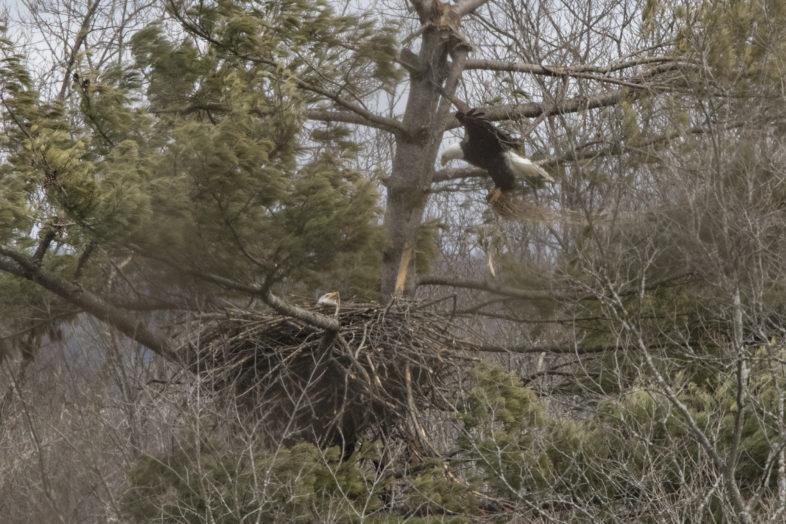
An image taken from a great distance of a male Bald Eagle delivers nesting material to a waiting female along the Connecticut River. / © K.P McFarland
Historical information on bald eagles in Vermont is limited; however, eagles were considered rare summer residents in the early 1900s. A pair was known to have nested on Lake Bomoseen in the central part of the state in the 1940s. After missing from the state for many years, in August 2008, a successful nest and fledging was confirmed in Concord, and two more nests were confirmed in 2009.
Vermont’s Bald Eagle population continued its recovery in 2017. Twenty-one pairs of adult Bald Eagles successfully produced 35 young in Vermont in 2017, a modern-day record in the state according to the Vermont Fish & Wildlife Department. The species remains on Vermont’s endangered species list, but another strong year of growth has biologists hopeful for their continued recovery.
Bald Eagles typically nest along significant water bodies where fish and other aquatic foods are readily available. In Vermont, most bald eagle nests are found along the Connecticut River, Lake Champlain, Lake Memphremagog, and some other large inland bodies of water.
In 2002, the first Vermont eagle nest was discovered after a 60-year absence. However, it wasn’t until 2008 when the first eagle fledgling successfully left its nest. Eagle numbers have been steadily increasing since then, giving hope to their full recovery in the near future.
In Vermont, Bald eagles typically nest in tall trees with broad visibility and sturdy branches located near lakes and rivers. Adults show a strong tendency for fidelity to their breeding areas, and will often use the same nest for many years. The nest tree requires sturdy branches to support the growing weight of the nest as materials are added each year. Nests are usually located approximately 50 to 60 feet high and 5 to 30 feet below the top of a live tree.
Egg-laying generally begins from early March through as late as early May in the Northeast. Clutch sizes range from one to three eggs. Incubation lasts about 35 days. Competition for food in the nest can be fierce and the youngest chick often dies. Fledging occurs at 11 to12 weeks after hatching. Parental care may continue for up to three months after they leave the nest. The entire breeding cycle, from courtship to fledgling independence, takes at least six to seven months.
You can see where eagles have been sighted on Vermont eBird recently. If you find a nest site, please report it to the Vermont Fish & Wildlife Department or VCE. Please do not approach or disturb nesting areas.
Skunk Oil – A Little Goes a Long Way
There is nothing like the fresh smell of a spring morning, unless, during the night, a skunk skulked about your neighborhood. The striped skunk is armed with just a teaspoon of odoriferous oil in its two anal glands, but a little bit goes a long way.
Skunk oil research has been going on for over a century as scientists have tried to determine what makes the stuff so potent that it can drive a bear away. Way back in 1896, Thomas Aldridge at Johns Hopkins University showed that humans could detect the smell at just 10 parts per billion, the equivalent to detecting just one drop of it diluted into a medium-sized, backyard swimming pool. More recently, William Wood, a chemist from Humboldt State University, pointed out that a number of chemicals have been incorrectly attributed to skunk oil over the years, and his work has now given us a fairly complete understanding of the chemical compounds and how to neutralize them.
The scent-gland secretion is a yellow oil composed primarily of volatile compounds known as thiols, and their derivatives. (A thiol is a compound distinguished by its sulfur-hydrogen bond.) Most of us immediately recognize the smell of ethanethiol (also called ethyl mercaptan), a common thiol that’s added to otherwise odorless propane gas so we can easily smell any leaks. Another thiol creates the “skunky” smell of beer after it has been exposed to ultraviolet light. The thiol derivatives present in skunk oil are not particularly odoriferous, but they are easily converted to far more potent thiols when they react with water
Skunks are reluctant to use the oils though. With only enough for a half dozen sprays at most, and a 10-day period to manufacture more, skunks will only spray if they absolutely have to. In an attempt to avoid spraying, skunks often give warning. First, they show their striped white back to warn you. This is followed by threat behaviors, like stomping with both front feet, sometimes charging forward, and then edging backwards dragging their feet and hissing. If all this fails, watch out.
Each spray gland has a nipple, and skunks can aim and direct the spray using highly coordinated muscles. A skunk can spray up to 25 feet and hit something fairly accurately up to 7 feet away. When there is a target, they can direct a fine stream right at the victim’s face. When being chased, a skunk will instead emit a foul cloud for the predator to run into.
There is one predator that remains undeterred by the odiferous oil, the great-horned owl. The small size of the olfactory lobes in their brains suggests that they have a very poor sense of smell. Some individual owls can downright stink of skunk, a common complaint among wildlife rehabilitation workers. Their nests can even smell of their musky meals. But larger-lobed mammals quickly learn to avoid the white stripe in the night.
